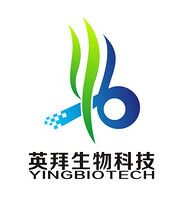| Human Immunotoxicity PCR Array |
|
| The Human Immunotoxicity RT2 Profiler PCR Array profiles the expression of 84 key genes responsive to the direct harmful effect of xenobiotics on immune cell function. Minimizing toxicity remains one of the major barriers to bringing a drug to market. Frequent and troublesome immunotoxic side-effects make the immune system an important target of toxicological studies. However, using the typical gross morphological changes, circulation biomarkers, and cellular assays of immune function as phenotypes often requires expensive and time-consuming studies. Genes that consistently exhibit altered expression during these toxic responses in model systems may serve as more readily accessible biomarkers to predict potential adverse clinical outcomes. Profiling the expression of these genes in human cell lines (such as Jurkat cells or peripheral blood mononucleated cells) or organs (especially spleen and thymus) of mice or rats treated with candidate drugs can also help indicate the immunotoxicological response mechanisms that they induce. An understanding of these mechanisms, currently lacking for most immunotoxicants, can then guide chemical modifications to avoid the observed toxic responses rather than completely dismissing a drug class otherwise effective at preventing or treating the target disease phenotype. This array includes the most differentially expressed genes from published microarray studies analyzing RNA from rodent immune system organs or human immune cells after treatment with various immunotoxicants and immunosuppressive drugs. These genes are known to mediate a number of typical cellular stress responses including cell cycle arrest, drug metabolism and transport, heat shock response, immune and inflammatory responses, oxidative stress response, and the unfolded protein response. A set of controls present on each array enables data analysis using the ΔΔCT method of relative quantification and assessment of reverse transcription performance, genomic DNA contamination, and PCR performance. Using real-time PCR, research studies can easily and reliably analyze the expression of a focused panel of genes to determine the molecular toxicological response pathways that investigational drug candidates activate with this array.
The RT2 Profiler PCR Arrays are intended for molecular biology applications. This product is not intended for the diagnosis, prevention, or treatment of a disease.
96-well Plate, 384-well (4 × 96) Plate, and 100-well Disc formats are available.
Available for cells, tissues, FFPE samples and small samples |
|
|
|
|
Upregulated in Immunotoxicity: ABCA1, ABCG1, ADH1C, AHSG, APOA5, APOF, C9, F2, FABP1, GSTA3, HPX, HRG, MARC1, NR5A2, PON1, SERPINA3, VPREB1.
Downregulated in Immunotoxicity: APOL3, APOL4, BTNL10, BZRAP1, CCNB2, CDR2, CRIM1, CTSE, GPR17, GYPA, HMGCS1, ISG20, KLF1, KLF2, LYZ, MKI67, SLC7A11, SNCA, TRIM10.
Immune Responses: AHSG, ANG, C9, CCR5, CEBPB, CTSE, HPX, F2, FN1, IFI6, IGJ, IGSF6, ISG20, KLF2, LAT2, LYZ, PAWR, SERPINA3, SNCA, THBS1, TLR4, VPREB1.
Inflammatory Responses: AHSG, APOL3, CCR5, CEBPB, F2, FN1, SERPINA3, SPP1, TLR4.
Drug Metabolism: ADH1C, ALDH8A1, BZRAP1, CYP3A5, GSTA3, MARC1, MT1F, NQO1, PON1.
Drug Transporters: ABCA1, ABCG1, SLC25A13, SLC31A1, SLC7A11.
Glucocorticoid Signaling: AK4, CEBPB, VLDLR.
Heat Shock Response: HSPA1B, HSPA5.
Oxidative Stress: HPX, KLF2, MT1F, NQO1, PON1, SLC7A11, SNCA, SRXN1.
Unfolded Protein Response: CEBPB, CHAC1, HSPA1B, HSPA5, TM6SF1, VLDLR.
Cell Cycle: CCNB2, CCNG2, FBXO32, FBXO38, KLHL24, MKI67.
Channels & Transporters: ABCA1, ABCG1, ATP2B1, CHAC1, KCNQ1, SLC25A13, SLC31A1, SLC7A11.
Cytoskeletal Regulators: ANG, GEMIN5, GYPA, HRG, MYH3, PAWR.
Cytokine & Chemokine Receptors: ACKR3, CCR5, CRIM1, GPR17, TLR4.
Extracellular Matrix and Adhesion Molecules: FEZ1, FN1, GPNMB, HRG, SERPINA3, SPP1, THBS1.
G Protein Coupled Receptor Signaling: ARRDC3, CCR5, ACKR3, GPR17, GPR18.
Lipoprotein Signaling & Cholesterol Metabolism: ABCA1, ABCG1, ALDH8A1, APOA5, APOF, APOL3, APOL4, HMGCS1, VLDLR, VPREB1.
Transcription Factors: ATF3, CEBPB, ID1, ID2, KLF1, KLF2, NR5A2, PAWR, TRIM10, ZDHHC14.
Other Genes: BTNL10, C7orf50, CDR2, FABP1, METAP2, NEU4, PSD3, SNX25, VMP1. |









